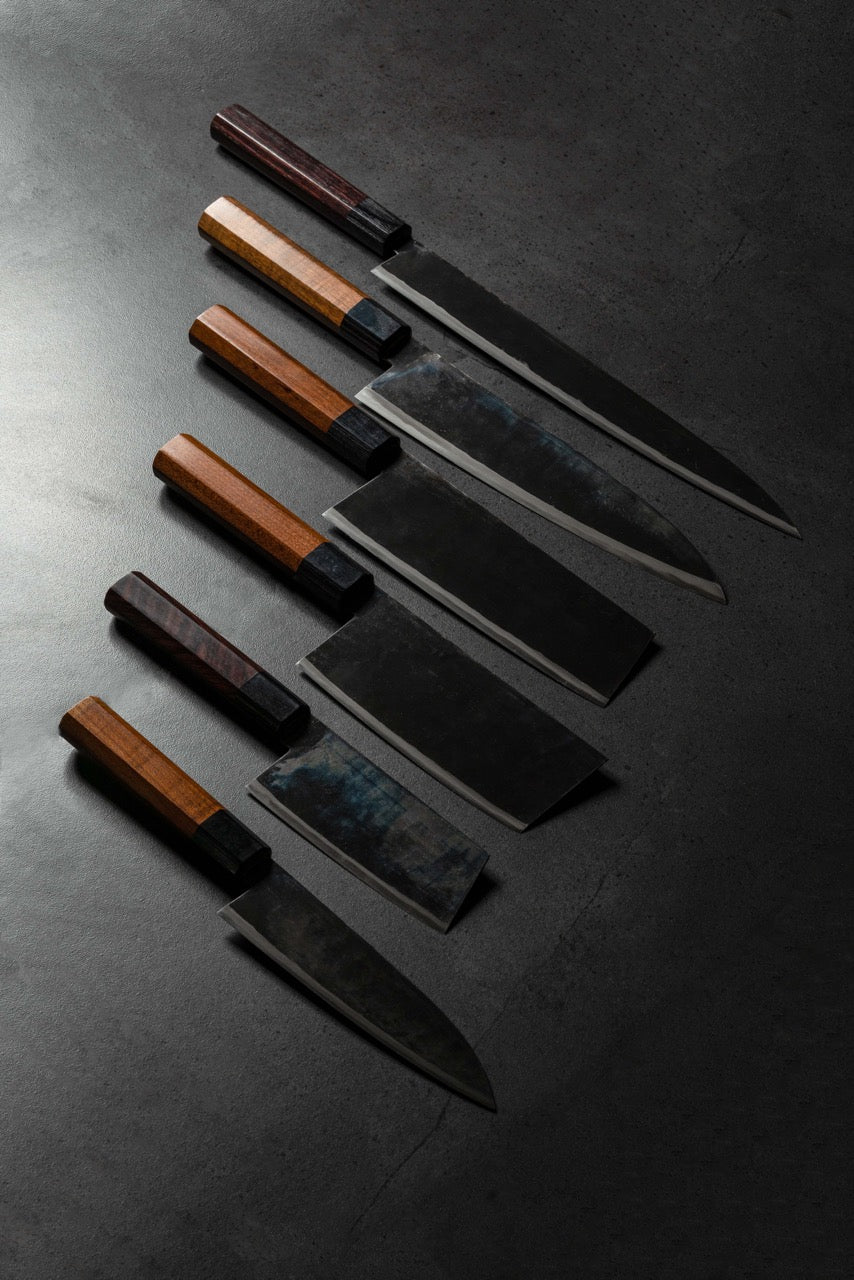
Hitohira Kikuchiyo Kyuzo White #2 Kurouchi Kiritsuke Gyuto 210mm Cherry Wood Handle
Description
In the early 2000s, Kikuchiyo was invited by master craftsman of Sakai to join them as a blacksmith. The art of blacksmithing is physical, the rough working environment of fire and iron takes a toll on the body and many of the masters' abilities begin to wane in their forties and fifties. As Kikuchiyo started earlier in life, he has gained most of the knowledge and skill of fine forging and quenching, before his physical abilities deteriorate.
Kikuchiyo proactively experimented with new steels not generally used by Sakai’s blacksmith, steels such as stainless. His experience and skill have made his Ginsan (Silver 3) knives popular among Japanese cuisine chef’s, many stating “If you use Kikuchiyo’s Ginsan once, you will never replace it”.
Kikuchiyo is also known for fine Honyaki quenching, beautiful Hamon and the correct hardness and gumminess are only achievable by experienced masters achieving the correct temperature. His Honyaki is supported by many of Sakai’s sharpeners and finishers, professionals who know what makes a good kitchen knife.
When Kikuchiyo joined as a blacksmith, he dreamed of success and becoming a great man. He continues to develop his skills as a craftsman, modelling each of his knives on the image of his master’s forge.
Kyuzo’s father Heihachi is one of the busiest sharpeners in Sakai. Heihachi’s workshop room and corridor were always filled with knives waiting to be sharpened. Although Kyuzo initially worked under his father to learn the foundation of rough sharpening, eventually he became a student of Kambei, known as one of the best sharpeners in Sakai because he knew best how to sharpen wide double bevel knives. After a few years of training, he built his style based on both his father and Kambei’s respective styles. Today, Kyuzo is one of only a few people who can sharpen wide double bevel with really good Shinogi-line in Sakai, one of the most challenging techniques in sharpening.
Tips for best results
Make sure your knife will deliver its absolute best by having it professionally sharpened at least once a year. Please note that our meticulously handcrafted Japanese knives are – unless otherwise noted – carbon steel and not stainless steel. To prevent rust, make sure the blades are patted dry – especially when cutting acidic items. Never cut frozen foods, hard products, bone, or twist the blade when using. Never soak in water after use or put in the dishwasher. After use, store in a cool, dry place and avoid high temperature fluctuations.
Our commitment to you – our customers
Warranty
Every knife we carry has a lifetime warranty from manufacturing defects and errors. For example, if the handle becomes detached or cracks appear after a few weeks of proper use. Or if there are any blade cracks from the edge to the spine. While such defects are indeed rare, they can occur. In such cases, we will exchange the knife in question or give you a refund. Each warranty case is different depending on the criteria, and we reserve the right in each and every case to evaluate the applicability of our lifetime warranty in the event of any manufacturing defects and errors.
After-Sales service
Do you get the feeling that your knife just can’t “cut it”?
Each knife we carry is supplied with a so-called “factory edge”. Our chef knife range comprises more than 200 different products. While all our handcrafted Japanese knives ship with a “factory edge”, ultimate blade sharpness can vary. If you feel that your knife’s blade edge is not performing to its full potential, feel free to contact us and we will provide you with professional sharpening for free!
Oops! What about the truly Unthinkable?
Was it just through a slight slip of the hand that your knife accidentally fell on the floor and damaged its tip and blade, or it was used to cut a hard, frozen product and chipped? Don’t despair, get in touch with us and we will solve the problem through our in-house, professional sharpening and repair service.
Simply contact us or visit our store to get a free estimate.









